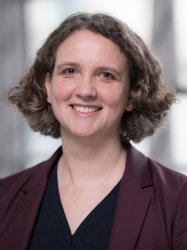Publications
165 results found
Morgans AS, Dowling AP, 2007, Model-based control of combustion instabilities, Journal of Sound and Vibration, Vol: 299, Pages: 261-282
Morgans AS, Stow SR, 2007, Model-based control of combustion instabilities in annular combustors, Combustion and Flame, Vol: 150, Pages: 380-399
Zhao D, Morgans AS, 2007, Tuned passive control of combustion instabilities using multiple Helmholtz resonators, 13th AIAA/CEAS Aeroacoustics Conf, Publisher: AIAA
Morgans AS, Stow SR, 2006, Model-based control of combustion instabilities in annular combustors, AIAA Flow Control Conf, Publisher: AIAA
Morgans AS, Karabasov SA, Dowling AP, et al., 2005, Transonic helicopter noise, AIAA Journal, Vol: 43, Pages: 1512-1524
Morgans AS, Dowling AP, 2005, Model-based control of a Rijke tube combustion instability, 11th AIAA/CEAS Aeroacoustics Conf, Publisher: AIAA
Morgans AS, Dowling AP, 2005, Model-based control of combustion instabilities, ASME Turbo Expo, Publisher: ASME
Dowling AP, Morgans AS, 2005, Feedback control of combustion oscillations, Annual Review of Fluid Mechanics, Vol: 37, Pages: 151-182
Morgans AS, Dowling AP, 2004, Low order modelling for transonic helicopter noise, AIAA Journal, Vol: 42, Pages: 2416-2428
Morgans AS, Karabasov SA, Dowling AP, et al., 2003, Low order models for blade response to vorticity gusts in bounded systems
Many aeroacoustic source mechanisms involve the interaction of a vortical gust with a blade. However, there has previously been no method of predicting bladevorticity interaction which offers sensitivity to blade geometry and which is computationally fast enough for use in design. This paper considers a test case involving a two-dimensional blade suspended in a wind tunnel, but the same approach could be applied to a turbomachinery cascade. Because the system is bounded, any vorticity distribution can be represented as the sum of independent modes which satisfy the boundary conditions. Using a combination of existing CFD methods and modern system identification techniques, the frequency responses of the blade loading to many vorticity modes are calculated in a single, time efficient calculation. A "sum of sines" inlet vorticity distribution is used in the CFD computation, and a system identification model structure based on an infinite impulse response (IIR) filter is used. The resulting frequency responses are validated using a flat plate analytical approximation and by comparing with the frequency responses predicted by single-mode calculations. Given the blade loading responses to many vorticity modes, the blade loading for a general vorticity distribution can be obtained by linearly combining the responses to component modes. Thus there has been progress towards a computationally efficient, blade geometry sensitive method of investigating blade-vorticity interaction in bounded systems. © 2003 by the Authors.
Morgans AS, Karabasov SA, Dowling AP, et al., 2003, Low order models for blade response to vorticity gusts in bounded systems, 9th AIAA/CEAS Aeroacoustics Conf., Publisher: AIAA
Morgans AS, Karabasov SA, Dowling AP, et al., 2003, Transonic helicopter noise, American Helicopter Society 59th Annual Forum, Publisher: AHS
Morgans AS, Dowling AP, 2002, The aeroacoustics of transonic helicopter blades
One of the most important issues facing the helicopter industry today is helicopter noise, in particular transonic rotor noise. It is the main factor limiting cruise speeds, and there is real demand for efficient and reliable prediction methods which can be used in the rotor design process. This paper considers the Ffowcs Williams-Hawkings equation applied to a permeable control surface. The surface is chosen to be as small as possible, while enclosing both the blade and any transonic flow regions. This allows the problematic quadrupole term to always be neglected, and requires only near field CFD input data. It is therefore less computationally intensive than existing prediction methods, and moreover retains the physical interpretation of the sources in terms of thickness, loading and shock-associated noise. A computer program has been developed which implements the permeable surface form of retarded time formulation. The program has been validated and subsequently used to validate an acoustic 2-D CFD code. It is fast and reliable for subsonic motion, but it is demonstrated that it cannot be used at high subsonic or supersonic speeds. A second computer program implementing a more general formulation has also been developed and is presently being validated. This general formulation can be applied at high subsonic and supersonic speeds, except under one specific condition. © 2002 by the author(s). Published by the American Institute of Aeronautics and Astronautics, Inc.
Morgans AS, Dowling AP, 2002, The aeroacoustics of transonic helicopter blades, 8th AIAA/CEAS Aeroacoustics Conf., Publisher: AIAA
Ffowcs Williams JE, Morgans AS, 2001, An application of feedback control to stabilise a specific case of the negative buoyancy flow instability, Journal of Fluids and Structures, Vol: 15, Pages: 1089-1102
This data is extracted from the Web of Science and reproduced under a licence from Thomson Reuters. You may not copy or re-distribute this data in whole or in part without the written consent of the Science business of Thomson Reuters.

